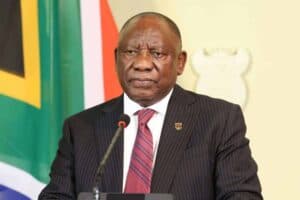President Cyril Ramaphosa’s plan to open up the power industry to independent suppliers is long overdue – but it will take time for the plan to come together.

After the initial euphoria over President Cyril Ramaphosa’s announcement on Thursday that the licensing for independent power producers (IPP) would be increased from 1MW to 100MW, it’s still a long game before we see an end to load shedding.
As noted by the Congress of South African Trade Unions (Cosatu), while the announcement will “help bring additional energy generation capacity on grid in the medium and long terms, it will not resolve the level 4 load shedding decimating the economy”.
“Eskom needs to be assisted in ramping up investments in maintenance to reduce the number of stations tripping,” Cosatu parliamentary coordinator Matthew Parks said in a statement.
ALSO READ: Private electricity firms step in to save South Africans
The catch in Ramaphosa’s announcement is that generation facilities “will still need to have their registration approved by the regulator and meet all of the associated requirements, including grid connection approval from the network provider”.
The IPPs will also have to comply with municipal regulations. It will take at least 60 days for the increase to be gazetted and, at this stage, it’s anyone’s guess what it will contain, with pleas already for onerous requirements to not impede the reform.
Similarly, the National Energy Regulator of SA (Nersa) approval process could take another 90 days, provided the would-be distributer has its papers in order.
“In an economy experiencing load shedding and increasingly unaffordable electricity for more than 15 years, any additional source of energy must be welcomed,” said Parks.
“The lack of reliable, affordable energy threatens millions of jobs in mining, manufacturing, agriculture. In fact, in all sectors.
“Electricity tariff hikes above inflation year after year robs workers of their already diminished wages.”
Solution-driven energy analyst Clyde Mallinson said 100MW would on average be enough to power both Knysna and Plettenburg Bay.
A city the size of Johannesburg would require far more.
“You would need about 50 of them, about 5 000MW,” said Mallinson, noting his number included Eskom and City Power.
“City Power uses about1 400MW on average.” Mallinson said the announcement included all types of power production, not only renewable energy.
Except, he said, the 100MW excluded wind farms which had a cap of 140MW.
“So, once again, the 100MW cap is somewhat arbitrary because it allows solar in under the Renewable Energy Independent Power Producers Procurement programme, but not wind,” Mallinson said.
“However, companies wanting to produce power for themselvescould do so now.
“The dropping of the licence rules makes it easier with Nersa, but it still has to be for own use or related customers if it is wheeled out.”
South Africa Independent Power Producer Association (Saippa) chair Thomas Garner said yesterday they had identified 16 projects under the cap of 100MW.
“These projects in total could deliver 600MW,” said Garner.
The benefits were immense in an economy on life support.
“An estimate is that in solar and wind project construction, 8 000 jobs are created per 1 000MW if installed over one year,” Garner noted.
The problem is, while SA needed power yesterday, these projects would take time.
“Solar projects typically take eight to 12 months for construction if fully permitted and there are no grid connection challenges,” Garner said.






